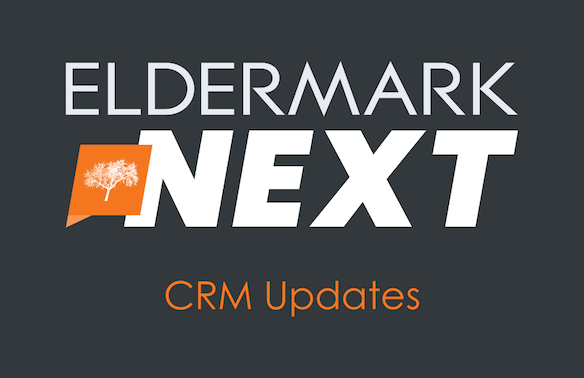The 5 Stages of Caregiver Burnout & How to Help Your Senior Living Staff Avoid It

Professional burnout reached a disheartening climax during the COVID-19 crisis, as many people succumbed to the pressures of managing work and home life, along with caring for loved ones like children or senior relatives. Fields like nursing were hit especially hard, but caregivers in general — including family caregivers and those in senior living settings — struggled the most. The Cleveland Clinic says 60% of caregivers have experienced burnout. But what is it, and how can it be prevented, spotted, and treated among your senior living staff? That’s what we’re here to answer.
Understanding Causes and Symptoms of Caregiver Burnout
Caregiver burnout is a physical and mental condition affecting both family caregivers and professional caregivers as they are faced with ongoing stress in the home or in the workplace. Burnout takes an enormous toll on caregivers, especially when they don’t have access to mental health resources, self-care, or respite care. But it can also negatively impact those around them, including colleagues, family members, and — in the case of senior living communities — residents.
Understanding how to spot the signs of burnout and how to prevent it is imperative to staff productivity and employee wellbeing. But it’s also critical to quality of care and overall outcomes for care recipients. Getting a handle on caregiver burnout before it takes hold is your best course of action.
Signs of Caregiver Burnout to Watch For
So, how do you spot the signs of caregiver stress and offer helpful caregiver support? Keep an eye out for these warning signs among your staff:
- Frequently showing up late or calling off work
- Change in demeanor (i.e. irritability or flat affect)
- Missing deadlines or failing to complete tasks
- Increase in preventable errors and mistakes
- Issues with concentration or focus
- Decreased participation in work culture
- Declining enthusiasm or energy when interacting with residents
- Change in daily routines (i.e. more frequent coffee breaks, withdrawing to restrooms or break rooms, signs of new or increasing tobacco usage, etc.)
If you’re seeing these signs in any of your staff members, burnout may be on the horizon (or it may have already arrived).
What Causes Caregiver Burnout?
So, what causes caregiver burnout? There are many reasons caregivers experience burnout, but here are some of the most common:
- Staff shortages
- Increased workload
- Lack of professional advancement
- Inadequate training
- Aggressive growth of the business (feeling they can’t keep up)
- Conflict with managers/supervisors
- External struggles (challenges at home, family issues, caretaking for another relative, etc.)
The Stages of Caregiver Burnout
In high-stress environments, especially in times of change or upheaval, stress is common among all staff members. Some, though, may be impacted more deeply than others. To help them avoid the negative fallout, it helps to have a handle on the stages of caregiver burnout.
Stage One: Nearly Normal
It’s close to impossible to identify burnout in the very early stages, especially when, as mentioned above, there’s an overall climate of stress in the workplace. Burnout begins with those very common signs of stress and anxiety, but when it isn’t dealt with right away, it grows and progresses. Keep your eyes peeled for staff members who are suddenly more irritable or who have less energy than normal. Communities with strong workplace cultures will have an easier time spotting any unusual behaviors.
Stage Two: Feeling Overwhelmed
Burnout isn’t always tied to increased workload or changes in demand, but it certainly can be. Staff members who are taking on more responsibilities may not complain, but that doesn’t mean they aren’t feeling the impact. If you have employees who are often asked to step in when other colleagues are absent, or who you rely on to go above and beyond, it’s important to check in frequently and make sure it’s not too much for them to handle, and they aren’t neglecting their own needs. At this stage, they often feel they can’t deal with all the expectations and the weight on their shoulders, but they also don’t know how or feel they can’t speak up or reach out for support.
Stage Three: Mental and Physical Exhaustion
Once burnout has them in its grip, most people get to the point of total physical and mental exhaustion, impacting the work they do as well as their relationships with colleagues, supervisors, and residents. At this stage, you may notice them showing up late, or calling off work altogether. When they are on the job, you might see they’re behaving differently — as if they’re only “going through the motions.” At this point, they may no longer have concerns about any negative repercussions — caregiver fatigue has immobilized them. This is when accidents happen and errors are made, so early intervention is key.
Stage Four: Survival Mode
Caregivers on the whole are usually excellent at masking, and they know how to appear normal in even the most extreme circumstances. That’s why they eventually enter survival mode, a stage of burnout in which they may seem to be completely fine. If you notice them offering to take on new projects or being unusually enthusiastic, you could be seeing a coping mechanism to push them through the burnout. Unfortunately, pretending it away typically only leads to more negative impacts down the line.
Stage Five: Total Burnout
In the final stages of caregiver burnout, you might notice the person withdrawing almost entirely from other staff or residents. This forced isolation is common among those dealing with severe burnout, and the loneliness can be devastating. They may also begin to exhibit signs of compassion fatigue, in which they treat peers or residents with a noticeable lack of concern. They might let their personal care routines slide, their sleep patterns may be off, and their own well-being falls by the wayside. Some staff members may quit unexpectedly at this point, while others will continue to push themselves to their physical and mental limits, endangering themselves and others.
Note: The stages outlined above don’t always happen in this exact order. You may see someone in survival mode, just trying to cope until they hit the stage of physical and emotional exhaustion. Remember, burnout can look different for each individual.
Strategies for Preventing Caregiver Burnout
Burnout sounds grim, but once you understand the symptoms of caregiver burnout, there are many actions you can take to unburden your employees and provide the resources and support they need.
Promote a Healthy Work-Life Balance
It often feels that the lines between home and work have been blurred, with the demands of each compounding. The way we communicate has evolved, and with work email and direct messaging platforms available on everyone’s mobile devices, there’s a feeling of being “always on.” Make sure your internal policies work to protect the time of your staff members and help them set healthy boundaries. Set clear expectations and practice transparency and honesty in your communications. It may also help to evaluate your time off policies and find opportunities to increase flexibility. Consider adding mental health days or respite days, particularly for employees in high-stress roles where compassion fatigue is a significant risk. You may even want to audit your benefits packages and look for opportunities to add increased behavioral healthcare, programs that improve physical health, counseling services, support groups, and more.
Foster a Supportive Work Environment
To identify, prevent, or help symptoms of burnout, communication is absolutely critical. An open and judgment-free work culture contributes to lowering the rate of burnout and creates healthy relationships between staff members and supervisors. Discuss the signs of burnout with the entire team, so employees will be empowered to self-evaluate and seek emotional support if needed. Encourage managers to schedule one-on-one meetings so they get regular face-to-face time to address any concerns staff members may not be comfortable bringing up elsewhere. Work to build a strong culture where employee input is valued and heard, and their suggestions are implemented.
Offer Continuous Training and Career Development
Inadequate training is a major cause of burnout, especially with staff shortages requiring employees to do more and take on unfamiliar responsibilities, increasing caregiver stress. Employees may also suffer burnout symptoms if they feel they have no clear path to professional advancement. You can help and support them by ensuring they are fully trained on all systems and functions they will perform, and by providing educational opportunities. This will vary depending on the needs of your community, but it could include anything from supporting them in acquiring necessary continuing education credits, sending them to industry conferences, or funding memberships to professional organizations and associations.
Implement Technology Solutions
Can the right technology help prevent caregiver burnout? It absolutely can. Technology is changing rapidly (something that can also add to the stress and overwhelm that accompanies burnout), but instead of adding numerous new platforms that all require different training and onboarding procedures, consider vendor consolidation. Consolidating software into one integrated platform makes training easier and quicker, and reduces errors. The right software will help you overcome EHR implementation challenges and other obstacles staff members face when switching between non-integrated systems. A consolidated solution should also offer you a centralized dashboard so you can access data at-a-glance and share it quickly and easily. An end-to-end software solution is one of the most effective ways you can take action against burnout.
How Eldermark NEXT Can Help
Eldermark NEXT is a comprehensive software solution that integrates your most critical functions into one user-friendly platform. It offers easy adoption and frictionless onboarding, so employees feel empowered and confident right from the start.
With Eldermark NEXT, you’ll save dozens of administrative hours every month, reducing workload and stress for your staff. You’ll also be able to use the platform to manage resources and gain actionable, data-driven insights. Use it to implement acuity-based staffing, which is shown to reduce burnout and improve balance across your team.
Beyond the benefits to your staff and reduction in burnout, you can also use Eldermark NEXT to take care of many other business operations, from communications to marketing.
Getting Started With Eldermark NEXT
It can be overwhelming to consider an entirely new software platform, especially when you’re concerned about introducing something that might be overwhelming to staff members nearing the stages of caregiver burnout. We get that, which is why we’d be thrilled to take you through the program step-by-step, so you can see exactly how it will empower employees by freeing their time and easing their load. Schedule your Eldermark NEXT demo today!




